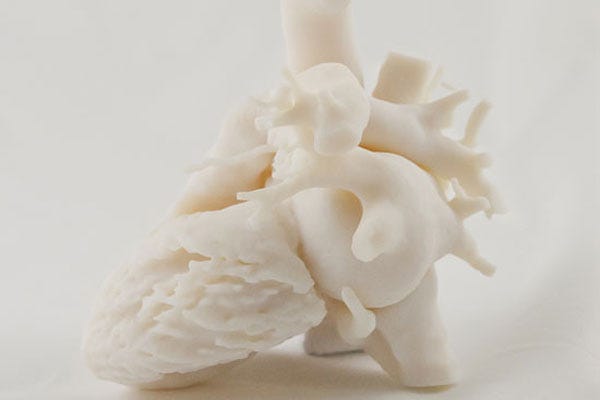December 11, 2013
Additive manufacturing, more commonly called 3-D printing, can be used to make everything from surgical guides and medical device prototypes to batteries.
Some of the most inspiring applications of the technology, however, can be found in new applications of the technology to treat previously unmet clinical needs.
See Susan York, Stratasys' North American business manager, chair a Learning Lab on 3-D printing strategies on Tuesday, February 11, at MD&M West in Anaheim, CA. |
1. Printing Tissue. The manufacturing process involves creating a object or objects through a machine that adds successive layers of materials (the "ink" of 3-D printing), versus the more traditional methods of using molding and machining. 3-D printing has shown promise in the area of creating tissue and organs, with ink comprised of living cells.
Check out this demonstration video from Cornell University about 3-D printing a human ear:
2. Prosthetics. Among the medical applications of 3-D printing that has seen the most progress is its use to product custom prosthetic limbs. One of biggest problems with traditional prosthetics is that they often don't perfectly fit patients' limbs. The ability of 3-D printing to make objects of practically any shape, using specifications from a computer program, solves this issue.
One of the most touching examples of how 3-D printing has shifted the standard of care can be found in the case of Emma, a young child who had been diagnosed with a condition known as arthrogryposis, which prevented her from lifting her arms. At birth, Emma was only capabple of moving her thumb and had trouble learning how to walk.
To help Emma, researchers Tariq Rahman and Whitney Sample of Nemours/Alfred I. duPont Hospital for Children used 3-D printing to create a custom exoskeleton. 3-D printed using ABS plastic on a Stratasys system, the exoskeleton enabled Emma to gain control over her arms. The researchers were able to produce a series of exoskeletons to fit Emma as she grew. At the age of four, Emma referred to the exoskeleton as her "magic arms."
3. Custom Exoskeletons. 3-D printing is also well suited to making customized prosthetic hands. Recently, CBS aired a segment featuring a 12-year-old with a bright new prosthetic hand capable of grabbing and holding objects. The boy's father reached out to a mechanical-hand innovator named Ivan Owen, who had previously used 3-D printing to develop a custom prosthetic for a child. The first time the 12-year old used the hand was, in the child's words, "pretty awesome." The end result was the fraction of a cost of traditional prosthetics.
4. Personalized Airway Splint. 3-D printing has also proved lifesaving in the case of a baby named Kaiba Gionfriddo who had difficulty breathing. As a six-week old, Kaiba would turn blue after stopping breathing. Doctors gave him a small chance of surviving.
University of Michigan researchers were able to save his life by developing a custom airway splint to replace Kaiba's crushed windpipe. A CT scan enabled the team to design the device.
5. Bone Scaffolds. It even has potential to produce bone-like implants for reconstructive surgery that then act as scaffolds for real bone cells, which multiply and take over the implant as real bone as the implant dissolves away. A British company known as Oxford Performance Materials has even developed a product known as Osteofab that was used earlier in the year to replace 75% of U.S. patient's skull. The product has received 510(k) clearance from the FDA.
6. Cardiac Models. 3-D printing is also helping designers better envision the parts of the body they are building devices for.
It can be used to produce extremely accurate models for cardiovascular applications, as in the case of the HeartPrint service from Materialise. Traditionally, engineers have used blown glass for rigid parts or silicone for compliant models, which offer limited accuracy. The HeartPrint service makes use of CT or MRI data to create realistic models. "It allows you to take medical image data and select different regions of the body, whether be soft tissue or bone, and create accurate 3D representations from it," said Peter Verschueren, global cardiovascular business development manager at Materialise (Brussels, Belgium) in an interview with MPMN.
|
The HeartPrint 3-D printing service from Materialise enables engineers to do benchtop testing on cardiac new devices. Shown here is a 3-D printed model of the heart. |
Brian Buntz is the editor-in-chief of MPMN. Follow him on Twitter at @brian_buntz and Google+.
About the Author(s)
You May Also Like



